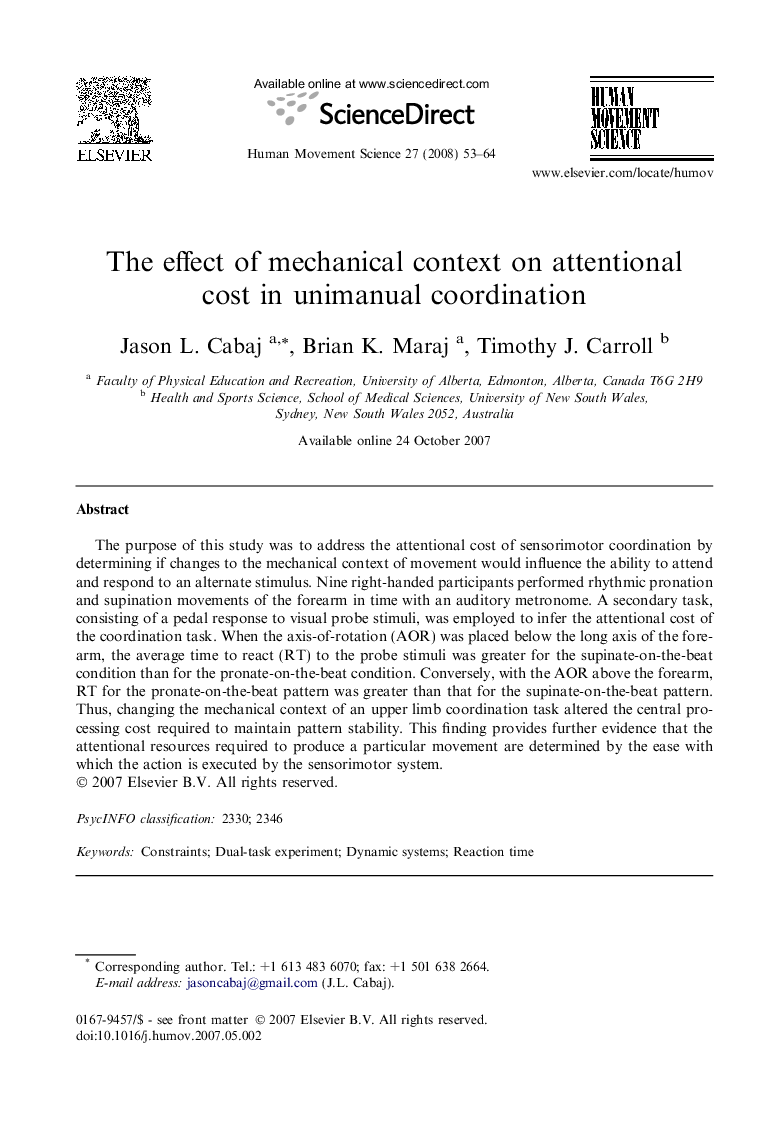| Article ID | Journal | Published Year | Pages | File Type |
|---|---|---|---|---|
| 928621 | Human Movement Science | 2008 | 12 Pages |
Abstract
The purpose of this study was to address the attentional cost of sensorimotor coordination by determining if changes to the mechanical context of movement would influence the ability to attend and respond to an alternate stimulus. Nine right-handed participants performed rhythmic pronation and supination movements of the forearm in time with an auditory metronome. A secondary task, consisting of a pedal response to visual probe stimuli, was employed to infer the attentional cost of the coordination task. When the axis-of-rotation (AOR) was placed below the long axis of the forearm, the average time to react (RT) to the probe stimuli was greater for the supinate-on-the-beat condition than for the pronate-on-the-beat condition. Conversely, with the AOR above the forearm, RT for the pronate-on-the-beat pattern was greater than that for the supinate-on-the-beat pattern. Thus, changing the mechanical context of an upper limb coordination task altered the central processing cost required to maintain pattern stability. This finding provides further evidence that the attentional resources required to produce a particular movement are determined by the ease with which the action is executed by the sensorimotor system.
Related Topics
Life Sciences
Neuroscience
Cognitive Neuroscience
Authors
Jason L. Cabaj, Brian K. Maraj, Timothy J. Carroll,
